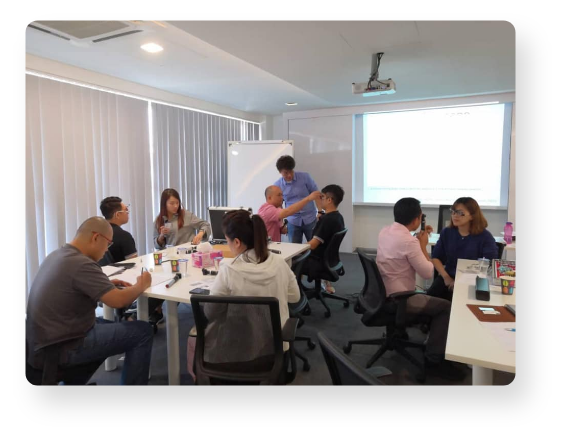
How can we
help you?
Frequently Asked Questions
All 20/20 means is you are able to see the size of letter on the eye chart that you are supposed to see from 20 feet. It does not test all the visual skills critical to reading and learning.
The focus of your yearly eye exam is to maintain good eye health and check for the need for glasses or contacts. The Neuro-developmental vision evaluation takes over where the general exam left off. Our Practitioner test for problems with eye movement, eye coordination, and other subtle problems that can interfere with reading and learning
Depending on the depth of the problem, the Neuro-Developmental & Behavioral Optometrist might recommend a “watch and wait” approach, special therapeutic lenses or a more aggressive treatment plan, including vision therapy.
Vision Therapy is an individualized treatment program using specialized eye exercises and equipment that help teach the patient how to use their eyes correctly and helps them better understand what they see.
If a vision problem is at the root of your child's difficulties, it won't make a difference what other approaches are tried (tutoring, diet modifications, medication, etc.). Your child won't have the visual skills necessary to make sense out of what he/she is trying to read and will continue to struggle until the vision problem is fixed.
If your child is struggling with reading or just not performing up to potential, please consider scheduling a Neuro-developmental vision evaluation.
The first step to determining whether or not Vision Therapy is needed is to schedule a Neuro-developmental vision evaluation. There are many factors that our Behavioral & Developmental Optometrist takes into account prior to prescribing this course of therapy.
Although it is a dynamic optometric specialty that improves visual function and performance, vision therapy is actually an outgrowth of orthoptics. Orthoptics, which literally means "straightening of the eyes,” was introduced to this country by physicians in the late 1800s. As physicians became more focused on eyeglasses, medication, and surgery, the benefits of orthoptics were taught to fewer and fewer practitioners. However, optometrists in the mid 1900's took the best that orthoptics had to offer, and pioneered the development of vision therapy.
Each program is tailor-made for each patient. Patients will typically need in-office therapy once a week. In addition, patients will be given a set of exercises to do at home. This reinforces what was learned during the office therapy training sessions. Commitment to the therapy program and maintaining a schedule of visits to the office are important in the success of the program. For patients who are unable to visit the office frequently, some binocular vision problems can be treated with an at-home training program that can be done on your computer. The programs are designed to address your weaknesses and can be monitored by the Behavioral & Neuro-Developemental Optometrist.
Like many skills, visual skills are developed. Since they are developed, they can generally be improved through proper therapeutic techniques. In Neuro-vision therapy, the optometrist prescribes visual tasks to be practiced under controlled conditions with the direction of a vision therapist. Repetition of these tasks enhances vision by coordinating and improving eye movement, focusing ability and by straightening the alignment of the eyes.
When the program is complete, the benefits of vision therapy will last for a lifetime. Accurate focusing and the efficient use of both eyes together is a reflex which, when conditioned, should operate effortlessly. Self-monitoring activities are prescribed at the end of each therapy program. Non-medical Neuro-vision therapy, as related to visual perception, prepares children for lifelong learning, and it fills in gaps for many adults who have lost visual skills and abilities.


